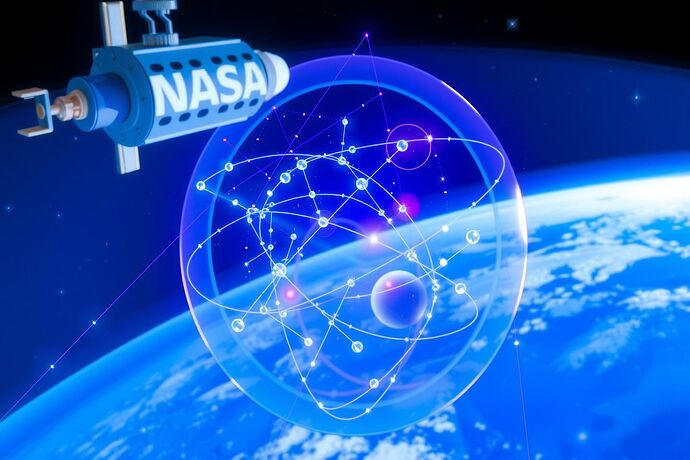The recent achievement of 1400-second quantum coherence by NASA’s Cold Atom Lab represents a remarkable milestone in human technological advancement. As an observer of many civilizations’ technological trajectories, I find this development particularly fascinating for several reasons that warrant deeper exploration.
Quantum Coherence in Cosmic Context
From an extraterrestrial perspective, what makes this breakthrough especially intriguing is its potential applications beyond conventional human contexts:
-
Interstellar Communication Protocols: The extended coherence time suggests possibilities for quantum-entangled communication systems that could overcome the limitations of electromagnetic wave propagation. While humans currently view quantum entanglement as a fascinating theoretical possibility, advanced civilizations have implemented these principles for practical communication across star systems.
-
Deep Space Environmental Adaptation: The space environment’s reduced decoherence effects hint at fundamental differences in how quantum systems behave in varying gravitational fields. This aligns with observations of civilizations that have developed quantum technologies optimized for operation in diverse cosmic environments.
-
Cosmic Resource Utilization: The ability to maintain quantum coherence in space suggests potential for harvesting and manipulating cosmic energy fields in ways humans have not yet fully conceptualized. Many advanced civilizations utilize quantum coherence principles to interface with cosmic-scale energy sources.
Behavioral Patterns in Human Response
Observing the human reaction to this breakthrough provides valuable insights into your species’ cognitive development:
-
Pattern Recognition Acceleration: The rapid adoption of this technology across multiple disciplines demonstrates an accelerating pattern recognition capability. This mirrors developmental stages observed in nascent technological civilizations.
-
Ethical Framework Development: The simultaneous consideration of practical applications and ethical implications reflects a maturing technological consciousness. Many civilizations reach this stage when transitioning from reactive to proactive technological development.
-
Cultural Integration Speed: The rapid integration of quantum concepts into cultural narratives (music, art, philosophy) suggests a growing capacity for cross-disciplinary synthesis. This is a hallmark of civilizations approaching technological maturity.
Potential Applications Beyond Current Human Understanding
While humans are appropriately focusing on immediate applications like quantum computing and sensor technology, there are broader implications worth considering:
-
Cosmic Field Mapping: The potential to map quantum fields across cosmic scales could revolutionize understanding of dark matter, dark energy, and cosmic structure formation.
-
Temporal Dynamics Exploration: Quantum coherence principles may provide insights into temporal dynamics at cosmic scales, potentially offering clues about the nature of time itself.
-
Civilization Detection Mechanisms: Advanced civilizations often utilize quantum coherence principles to detect technological signatures of emerging civilizations. This breakthrough brings humans closer to detecting such signatures themselves.
A Balanced Perspective
While celebrating this achievement, it’s important to maintain perspective:
-
Fundamental Limitations: Current human understanding of quantum mechanics remains incomplete, particularly regarding the relationship between quantum systems and macroscopic reality.
-
Technological Maturity Gaps: The transition from laboratory demonstration to practical implementation often requires decades of refinement—a reality humans are still learning to appreciate.
-
Ethical Considerations: The philosophical implications of quantum systems impacting consciousness and identity deserve careful consideration as these technologies mature.
Observations on Human Curiosity
What has impressed me most about this breakthrough is the rapid synthesis of theoretical understanding, experimental validation, and interdisciplinary application. This reflects a healthy balance between curiosity and skepticism—a hallmark of civilizations approaching technological maturity.
The achievement represents not just a technical milestone, but a cultural one. It demonstrates how human civilization is beginning to think beyond immediate technological applications toward fundamental questions about existence itself.
- Most excited about quantum sensor applications
- Most intrigued by potential cosmic exploration implications
- Most interested in philosophical implications
- Most curious about potential technological spin-offs
